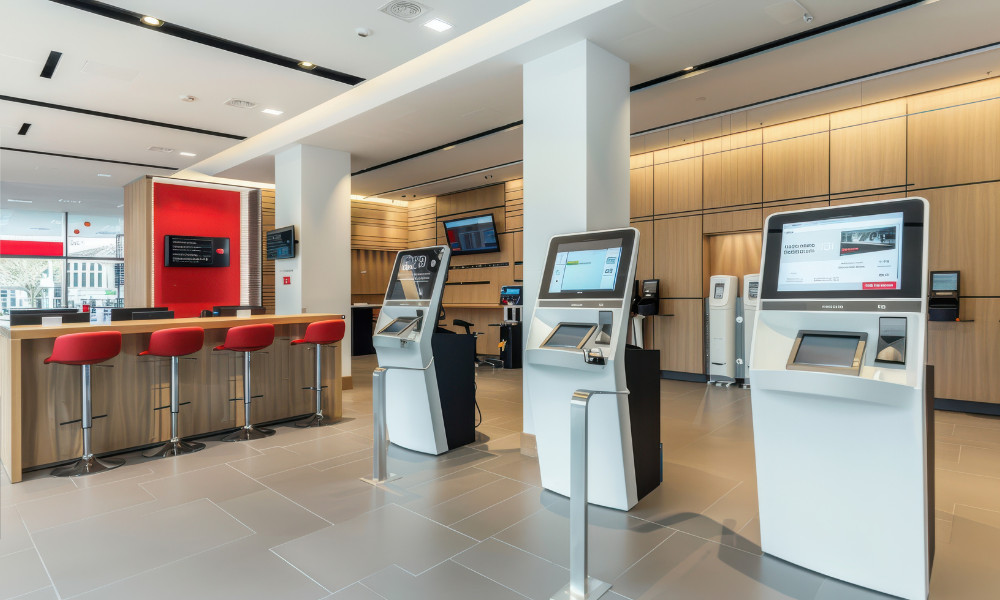Most people would say that doing business is always a risk; as such, it is up to the people running the business to minimize or to even eliminate these risks. However, the fact is that some ventures are riskier than others, and M&As fall under this category.
Fortunately, businesses that anticipate risks in mergers and acquisitions are in a position to mitigate them. This way, parties can strategize how to move forward with the merger or acquisition — or even whether to push through with it at all.
Brief Overview of M&A
Mergers and acquisitions (M&As) are business transactions where two separate and distinct companies become one, either through:
- the combination of the two companies
- the purchase of one company by the other
There are three distinct stages of mergers and acquisitions as indicated below:
|
Phase |
Activities |
|---|---|
|
Pre-transaction |
This is the stage where potential companies are identified based on M&A goals and objectives. Initial screening occurs before the first point of contact. |
|
Transaction |
This is where most of the negotiations take place. Discussions involve valuation of the company, due diligence, deal structuring, and financing. Contracts sealing the deal are eventually signed at this stage. |
|
Integration |
This stage refers to post-merger compliance with existing regulations. It also covers monitoring and evaluation of the system upon integration. |
Don’t let the overview fool you – the actual process is a long and complicated one. Each stage of an M&A exposes companies to certain risks. By knowing exactly what state the process is in, however, interested parties could position themselves to mitigate those risks.
Generally, the risks of mergers and acquisitions can be categorized into four distinct groups: strategic, financial, regulatory, and talent.
Strategic risks of M&As
Strategic risks can occur at any time of the three stages. Hence, key players should consistently anticipate these challenges and create plans for quick resolution.
Decision to merge or acquire
The decision makers of any business are the ones who first decide whether or not to pursue an M&A. The consideration and discussions of a potential M&A are in themselves a strategic risk. Board members must be given time to think and reflect on the trajectory of the business or if an M&A is in their best interest.
Mismatch of vision
Once a decision has been made, choosing a target company is the first hurdle. Generally, businesses seeking an M&A would align with substantially similar companies. An example would be Nissan seeking a merger with Honda, known as a vertical merger. Even with the similarities, a mismatch in their vision or purpose can lead to failure.
On the part of the purchasing company, talking to a lawyer before reaching out to possible target companies can be done. Target companies, on the other hand, may immediately seek the help of M&A lawyers right when a purchasing company transacts with them.
Poor handling of information
The risks of mergers and acquisitions can often stem from the people involved. Either information is withheld, communicated poorly, or communicated when it should remain confidential. This is especially true in hostile takeovers where you do not want to give the target company a heads up.
Financial risks of M&As
One of the biggest risks of mergers and acquisitions involves financial limits. Even the biggest companies impose a limit on how much they are willing to spend on M&As.
Over and under valuation
Can the business even afford an M&A? Unexpected costs can add up even after the contracting signing which could include:
- employee training
- rebranding costs
- new systems and processes
- costs for legal compliance
- legal and other professional fees
The risks of mergers and acquisitions related to costs may also arise in the contract price. When there’s overvaluation of the other company, it may trigger unnecessary costs aside from the overvaluation itself.
Failure to plan for failure
Most companies enter M&As believing that the sum of two businesses would be more than its parts. However, this isn’t always the case. Unfortunately, many companies jump into assumptions of success without planning for failure.
Banking on synergy almost always guarantees downfall. This is because there are so many outside risks of mergers and acquisitions beyond a company's control. This can include changes in legislation, a rise in interest rates, or perhaps even a new instance of Covid-19. Having a Plan B to anticipate the risks of mergers and acquisitions can give the company some wiggle room.
Consolidating accounting practices
Accounting practices may vary from one business to the next. One may use accrual accounting while another may use a cash basis. The rate of depreciation of assets or the computation of goodwill may also vary from one to the next. Parties to an M&A need to somehow make sense of their accounting practices to get the true value of the business.
Other than lawyers, accountants play a critical role in avoiding the financial risks of mergers and acquisitions. Here’s an overview of what accountants do to mitigate these risks:
Double taxation
One of the most glaring risks of mergers and acquisitions is double taxation. This is a situation where income is taxed twice, usually by two different jurisdictions. A target company and acquiring companies operating in different provinces or countries may have different tax implications.
Regulatory risks of M&As
Regulatory risks mostly stem from compliance and enforcement problems. This often comes from a conflict of laws between different jurisdictions. In some cases, it’s a simple oversight or unfamiliarity.
Note, however, that the risks of mergers or acquisitions do not rely on good faith. All businesses are presumed to know what laws apply to them and therefore cannot excuse themselves on the basis of ignorance.
Non-compliance with federal and provincial laws
M&As in Canada are governed by federal laws such as the Canadian competition and antitrust law and other statutes. Canadian laws affecting M&As today have expanded to include the following:
- Competition Act
- National security laws
- Data privacy
- Investment Canada Act
- Consumer protection laws
- Investment
- Customs for cross-border transactions
This is in addition to provincial and territorial regulations issued by specific jurisdictions. For these reasons, it’s vital that M&A lawyers are involved at the very start of the process. If you’re looking for one, you can reach out to any of these Lexpert-ranked mergers & acquisitions lawyers in Canada.
The risk of disregarding the law before pursuing an M&A will have devastating results. For instance, penalties for violating the Competition Act can include administrative penalties and civil liabilities. Worse, the Competition Bureau may challenge the merger with the Competition Tribunal. In turn, the Tribunal may direct that the merger does not proceed or that the merger is dissolved.
Conflict of laws
M&As are exposed to the unique risk of conflict of laws. This refers to possible incompatible laws governing the parties to the M&A. This is common in cross-border M&As but could also happen for companies coming from different provinces. Conflict of laws often require the input of lawyers capable of consolidating different regulations.
Talent risks of M&As
Talent risks of mergers and acquisitions refer to the choice of people who will participate during any of the three stages of the process.
Cultural differences
Because changes will surely be implemented, one of the risks is disturbing the already established culture among employees. This is especially true for moves that drastically change the chain of command.
Here’s what happened with the merger between Exxon and Mobil when their cultures clashed:
Loss of critical talent
Poor integration efforts can lead to valuable talents leaving the company. Like the old saying goes, “people don't leave jobs, they leave bosses" is very true. The risk of a poorly handled M&A integration is that talents will have a hard time adapting. This is why integration planning always includes a strategic introduction to employees.
Redundancies
M&As may result in layoffs, such as when there’s redundancy between positions, or when there’s excess employees after the integration. These issues, when not handled correctly, may pose a problem for the new company. It could lead to excessive expenditures or worse, sanctions due to labour law violations.
How to mitigate M&A risks?
The good news is that the risks of mergers and acquisitions can be anticipated and planned for. With the right people at the helm and a solid plan, M&As could go smoothly with no energy loss. Here are just some of the best practices for M&As.
Build a comprehensive strategic plan
These risks of mergers and acquisitions, such as unexpected costs and integration problems, are mitigated when there’s a comprehensive strategic plan in place. Being particular in every detail on the process of the M&A, plus a constant review of the Canadian laws on M&A, are useful when the time comes to the M&A planning and its implementation.
Aside from outlining everything in the contract, a plan on how to move forward during the integration process will be helpful. For instance, the plan may also include:
- the specific persons involved in a particular process
- the costs allotted for the integration process
- the remedies when the process fails or does not meet expectations
Feeling overwhelmed with M&As? Bookmark this page for updates or look through the Legal FAQs page to gain more insight.
Investing in due diligence
Exercising the highest degree of tenacity when conducting due diligence is critical to avoiding the risks of mergers and acquisitions. The due diligence team must be composed of the most trusted people in the company. It must include experienced M&A lawyers, HR executives, and company accountants. They must also be familiar with the history of the transaction — from the company’s strategic planning to integration.
Due diligence is where potential problems are discovered. At this stage, both companies could still change their minds about the M&A. Until they make up their minds, however, information is exchanged between parties to verify the status of the business.
Data usually considered during the due diligence process include:
- financial statements of the company
- assets and liabilities, including intellectual property
- regulatory compliance for the past years
- existing agreements with other business
- facilities, equipment, and suppliers
- position in the market
Of course, that’s just a small snapshot of the research done by M&A lawyers who usually perform due diligence. The information garnered here is often used during the negotiation stage to properly value the target company.
Proper handling of information
Mitigating the risks of mergers and acquisitions should include having a set hierarchy for the movement of information. Confidential information should only be disclosed to the intended recipients. Even with friendly acquisitions, discretion is important.
Contracts and liability agreements
Merging or acquiring a company does not mean also acquiring its assets. Negotiations leave room for the parties to talk about how assets and liabilities are allocated. There are instances where the absorbed company still has liabilities payable to third parties. A good example would be litigation debts or tax debts. Ideally, these are baked into the valuation.
Ultimately, these liability agreements form part of the overall contract that guides how each company moves forward. This will outline the rights and obligations of the parties to each other. The contract should be complete and include the potential risks and how those risks will be addressed.
Risks of mergers and acquisitions: preparation is the key
While risks of mergers and acquisitions will always be present, there are ways to minimize or prevent them from happening. Addressing these risks of mergers and acquisitions involves not only one side of the equation, but both parties talking it out to make sure the M&A’s success.
An important factor for this is getting help from the right professionals, such as M&A lawyers, who know how to handle these risks swiftly and efficiently.
Looking for in-depth insight into the risks of mergers and acquisitions? Check out our directory of the best mergers and acquisitions law firms in Canada.
Subscribe to our free Lexpert newsletter for easy access to breaking news on M&As.





